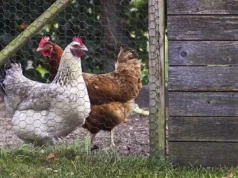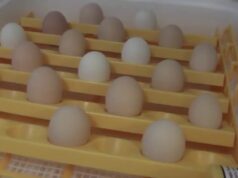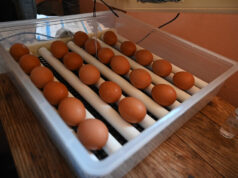Raising chicks successfully begins with providing them with a safe and nurturing environment. One critical aspect of this is the choice of flooring for the brooder. The infamous slippery chick brooder floor can be a cause for concern for many poultry enthusiasts. Understanding the implications and ensuring the well-being of your chicks is paramount.

Why is the Brooder Floor Important?
The brooder floor is the foundation of your chicks’ early life. A well-designed brooder floor can prevent injuries and ensure comfort. However, a slippery chick brooder floor can pose significant risks. It’s essential to address these risks to foster a healthy growing environment.
Risks of a Slippery Floor
1. Injuries and Health Issues
A slippery chick brooder floor can lead to splayed legs, a condition where the chick’s legs point sideways rather than forward. This can be challenging and often results in health complications if not addressed promptly.
2. Stress and Discomfort
Chicks on a slippery surface may experience stress and discomfort. They struggle to find their footing, which can lead to decreased activity and could impact their growth and development.
Choosing the Right Flooring
1. Non-Slip Materials
To counter the challenges of a slippery chick brooder floor, consider using non-slip materials such as rubber mats or textured surfaces. These materials provide better grip for the chicks, reducing the likelihood of injury.
2. Natural Bedding Options
Opt for natural bedding such as pine shavings or straw, which not only offer traction but also provide warmth and comfort. If you’re looking for eco-friendly bedding options, there are many available that support the well-being of your chicks.
Maintaining the Brooder Floor
1. Regular Cleaning
Maintaining cleanliness is crucial in preventing diseases and ensuring the health of your chicks. Regularly clean and replace bedding to avoid a buildup of droppings and moisture.
2. Monitoring for Wear and Tear
Keep an eye on the condition of the brooder floor. Materials can degrade over time, becoming more slippery or less effective. Replace or repair as needed to maintain a safe environment.
Additional Tips for a Safe Brooder Environment
1. Adequate Space
Ensure the brooder is spacious enough for the number of chicks you are raising. Overcrowding can exacerbate the issues of a slippery chick brooder floor by increasing stress and the risk of injury. Consider appropriate brooder dimensions to provide ample space.
2. Proper Temperature Control
Temperature is crucial for chick development. Ensure the brooder is kept at a consistent, comfortable temperature to support healthy growth. For more tips, you can visit this guide on bringing chicks home.

FAQ
What materials are best for brooder flooring?
Non-slip materials such as rubber mats or natural bedding like pine shavings are ideal to prevent slipping and offer comfort.
How often should I change the brooder bedding?
It’s advisable to regularly change the bedding to maintain hygiene. For a detailed guide, check out this article.
Can slippery floors affect chick growth?
Yes, slippery floors can lead to stress and injuries, potentially hindering growth and development.
Creating a safe and comfortable environment for your chicks is essential for their growth and development. By addressing the challenges posed by a slippery chick brooder floor, you can ensure your chicks are healthy and thriving. For more insights on brooder care, you can explore brooder basics.
This article contains affiliate links. We may earn a commission at no extra cost to you.











